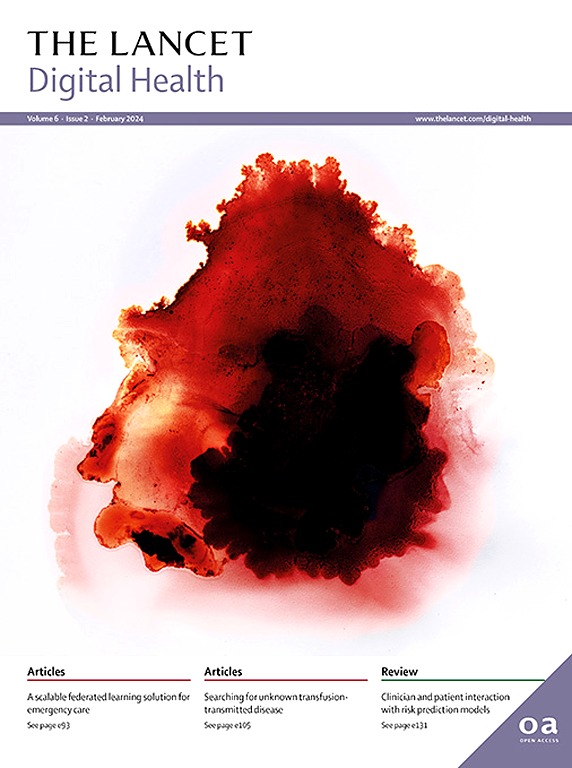Generating evidence to support the role of AI in diabetic eye screening: considerations from the UK National Screening Committee
IF 23.8
1区 医学
Q1 MEDICAL INFORMATICS
引用次数: 0
Abstract
Screening for diabetic retinopathy has been shown to reduce the risk of sight loss in people with diabetes, because of early detection and treatment of sight-threatening disease. There is long-standing interest in the possibility of automating parts of this process through artificial intelligence, commonly known as automated retinal imaging analysis software (ARIAS). A number of such products are now on the market. In the UK, Scotland has used a rules-based autograder since 2011, but the diabetic eye screening programmes in the rest of the UK rely solely on human graders. With more sophisticated machine learning-based ARIAS now available and greater challenges in terms of human grader capacity, in 2019 the UK's National Screening Committee (NSC) was asked to consider the modification of diabetic eye screening in England with ARIAS. Following up on a review of ARIAS research highlighting the strengths and limitations of existing evidence, the NSC here sets out their considerations for evaluating evidence to support the introduction of ARIAS into the diabetic eye screening programme.
产生证据支持人工智能在糖尿病眼筛查中的作用:来自英国国家筛查委员会的考虑。
糖尿病视网膜病变筛查已被证明可以降低糖尿病患者视力丧失的风险,因为可以及早发现和治疗危及视力的疾病。长期以来,人们一直在关注通过人工智能(通常称为自动视网膜成像分析软件(ARIAS))实现这一过程部分自动化的可能性。目前市场上已经出现了一些此类产品。在英国,苏格兰自 2011 年起就开始使用基于规则的自动分级器,但英国其他地区的糖尿病眼筛查项目则完全依赖人工分级。目前,基于机器学习的 ARIAS 更加先进,但人工分级能力面临更大挑战,因此,2019 年,英国国家筛查委员会(NSC)被要求考虑修改英格兰的糖尿病眼筛查方案,改用 ARIAS。NSC 对 ARIAS 的研究进行了回顾,强调了现有证据的优势和局限性,并在此阐述了他们在评估证据以支持将 ARIAS 引入糖尿病眼筛查计划时的考虑因素。
本文章由计算机程序翻译,如有差异,请以英文原文为准。
求助全文
约1分钟内获得全文
求助全文
来源期刊

Lancet Digital Health
Multiple-
CiteScore
41.20
自引率
1.60%
发文量
232
审稿时长
13 weeks
期刊介绍:
The Lancet Digital Health publishes important, innovative, and practice-changing research on any topic connected with digital technology in clinical medicine, public health, and global health.
The journal’s open access content crosses subject boundaries, building bridges between health professionals and researchers.By bringing together the most important advances in this multidisciplinary field,The Lancet Digital Health is the most prominent publishing venue in digital health.
We publish a range of content types including Articles,Review, Comment, and Correspondence, contributing to promoting digital technologies in health practice worldwide.
 求助内容:
求助内容: 应助结果提醒方式:
应助结果提醒方式:


